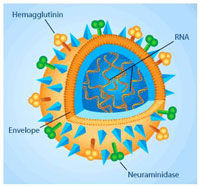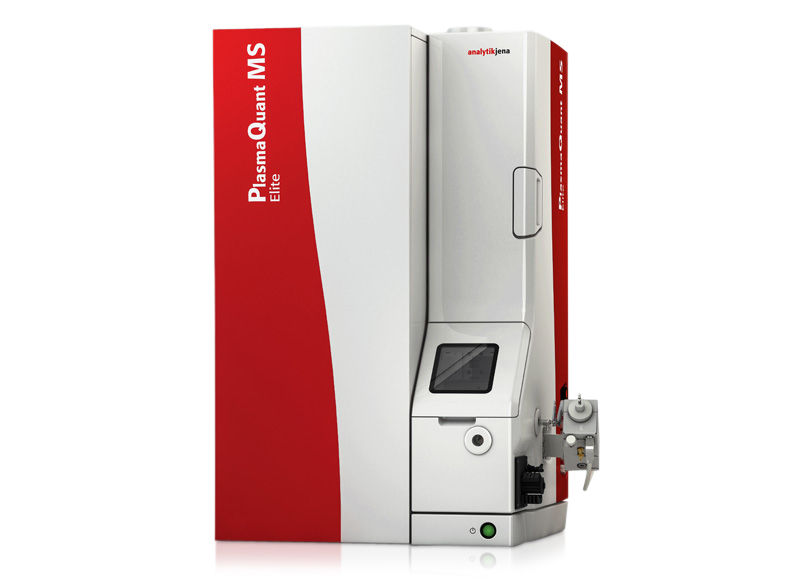High-sensitivity protein analysis: Biosensor chip recognizes diseases
In the battle against cancer and other diseases, precise analysis of specific proteins can point the way toward targeted treatments. Scientists at the Technische Universitaet Muenchen (TUM), together with Fujitsu laboratories of Japan, have developed a novel biosensor chip that not only recognizes proteins that are characteristic for specific diseases, but also can show if these proteins are changed through the influence of disease or drugs.
The human immune system recognizes pathogens by specific proteins on their surfaces. This detection principle manifests itself again and again in biology, and it is already used in medical tests. Such tests typically require relatively large amounts of sample material, however, and many problems can't be investigated in this way. For some tests, the target protein must be chemically modified by reagents. That requires both time and well trained lab technicians. Now scientists at TUM's Walter Schottky Institute have developed a biosensor one hundred times more sensitive than currently available tests in recognizing proteins that are characteristic for the clinical picture of specific diseases.
The biosensor chip holds synthetic DNA molecules, which are negatively charged, in an aqueous salt solution. These long molecules are tethered at one end to a gold surface. The free end is labeled with a fluorescent marker, so it can be optically observed; and at the very tip the scientists can place a "capture probe," a molecule that fits together with the target protein like the key to a lock. Alternating electric potentials set the DNA molecules in motion, swinging back and forth between "standing" and "lying" states with regular changes in a tightly confined but intense field. If the protein of interest is present in sample material placed on the biosensor chip, it will bind to the "key" molecule. And because this makes the DNA strands considerably heavier, their swinging motion will be noticeably slower. Precise confirmation of the identity of the captured protein can be deduced from measurements of this motion, since both the size and shape of the protein will affect the way the DNA molecules swing.
This approach is unique in its ability not only to determine the concentration of the target protein, but also to show if it is altered by the disease or the influence of medication. The scientists are currently working with a chip that can analyze 24 different proteins in parallel. "The potential to analyze, on a single chip, many proteins at once in terms of multiple parameters represents a significant advance," says Dr. Ulrich Rant, head of the project. Rant is a researcher in the laboratories of Prof. Gerhard Abstreiter at the Walter Schottky Institute, a central institute of TUM focused on the fundamental physics of semiconductor electronics.
Important application areas for this biosensor chip technology, which the TUM scientists have dubbed "switchSENSE," include medical diagnostics, pharmaceutical drug development, and proteomics research. It could eventually make its way into the doctor's office, as a simple and quick analysis tool for identifying infectious diseases.
Rant and his team have founded a startup company to commercialize their development, supported by the Technische Universitaet Muenchen and their industrial partner Fujitsu Laboratories Ltd.. They have won additional support through a research transfer program called EXIST, sponsored by the German Federal Ministry of Economics and Technology. They have also been successful in the first stages of two entrepreneurial competitions, the Muenchener Businessplan Wettbewerb and Science4Life. Further development is targeted toward completion of a pre-production prototype by the end of 2010 and collaborative pilot projects with customers in the biotechnology and pharmaceutical sectors.
Within TUM, support for this research has come through the International Graduate School of Science and Engineering (IGSSE). Ulrich Rant is a Carl von Linde Fellow of TUM-IAS, the university's Institute for Advanced Study. In addition, one doctoral candidate working on this research is being financed by the International Graduate School of Materials Science of Complex Interfaces (CompInt).
Original publication: Ulrich Rant, Erika Pringsheim, Wolfgang Kaiser, Kenji Arinaga, Jelena Knezevic, Marc Tornow, Shozo Fujita, Naoki Yokoyama, and Gerhard Abstreiter; "Detection and Size Analysis of Proteins with Switchable DNA Layers"; Nano Letters, 2009 Vol. 9, No. 4 1290-1295
See the theme worlds for related content
Topic world Protein analytics
Protein analytics provides a deep insight into these complex macromolecules, their structure, function and interactions. It is essential for discovering and developing biopharmaceuticals, understanding disease mechanisms, and identifying therapeutic targets. Techniques such as mass spectrometry, Western blot and immunoassays allow researchers to characterize proteins at the molecular level, determine their concentration and identify possible modifications.

Topic world Protein analytics
Protein analytics provides a deep insight into these complex macromolecules, their structure, function and interactions. It is essential for discovering and developing biopharmaceuticals, understanding disease mechanisms, and identifying therapeutic targets. Techniques such as mass spectrometry, Western blot and immunoassays allow researchers to characterize proteins at the molecular level, determine their concentration and identify possible modifications.


























































